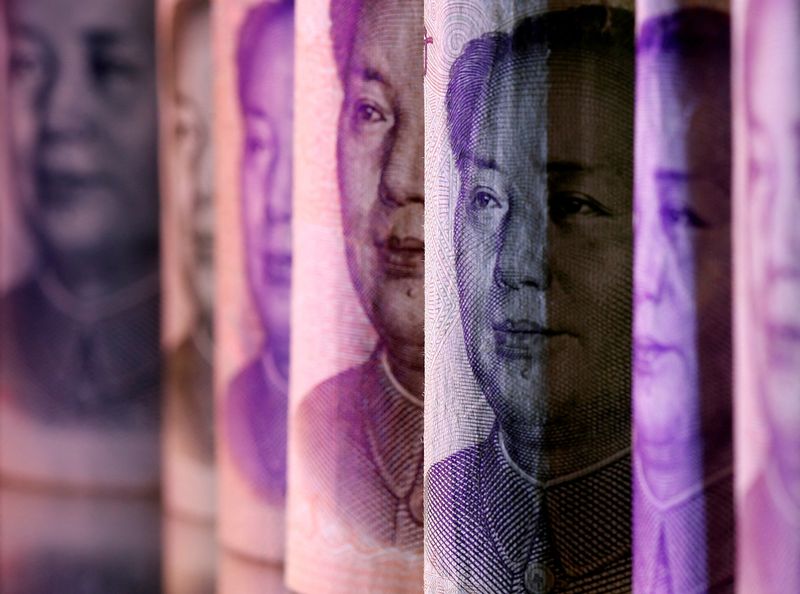SHANGHAI (Reuters) – The yuan fell against the U.S. dollar to the lowest level in almost four months after newly-elected U.S. President Donald Trump said he would impose a 25% tariff on all products from Mexico and Canada, and an additional 10% tariff on goods from China.
The offshore yuan fell roughly 0.3% to 7.2730 per dollar after the news, its lowest level since July 30, while the onshore yuan also fell after the market opened.
“The directional impact is clear for the yuan – weaker – but Chinese authorities will be nervous about devaluing too much and encouraging outflows,” said Ben Bennett, head of investment strategy for Asia at LGIM.
Ahead of the market opening, the People’s Bank of China (PBOC) set the midpoint rate, around which the yuan is allowed to trade in a 2% range, at 7.1910 per dollar, which was 450 pips higher than the Reuters estimate.
The fix’s effectiveness as a tool to manage yuan depreciation expectations is limited, Nomura analysts said in a note.
“We believe that if the spot market rises above the 7.30 level, market activity will shift where demand for USD becomes stronger than that of sellers,” Nomura analysts said. become weaker.
Nomura suggested going long the dollar against the .
The spot yuan opened at 7.2524 per dollar and was last trading 105 pips lower than the previous late session closing at 7.2553 as of 0239 GMT.
Actual tariff announcements and negotiations will boost the yuan in the coming quarters, said Liang Ding, an analyst at research firm. Macro (BCBA:) Beehive.
“Given the Trump campaign’s ‘promise made, promise kept’ rhetoric, markets may start pricing in additional risk premiums related to the second trade war as Trump’s inauguration approaches,” Ding said.
During Trump’s first term as president, the yuan weakened by about 5% against the dollar after the first round of US tariffs on Chinese goods in 2018, before falling another 1.5% a year later as trade tensions escalated.
As part of his pitch to boost U.S. manufacturing during the recent election campaign, Trump said he would impose tariffs of 60% or more on goods from China.
The proposed tariffs, as well as other policies such as tax cuts, are seen as inflationary and are likely to keep U.S. interest rates relatively high, hurting the currencies of U.S. trading partners.
The dollar’s six-currency index was 0.075% lower at 107.27.
LEVELS AT 02:39 GMT
INSTRUMENT FLOW UP/DOWN( % DAY DAY
vs USD -) US CHANGE HIGH LOW
LAST YEAR TO-
CLOSE % DATE
Spot Yuan 7.2553 -0.21 -2.12 7.2466 7.2568

Offshore 7.2629 -0.24 -1.91 7.2518 7.273
yuan spot


